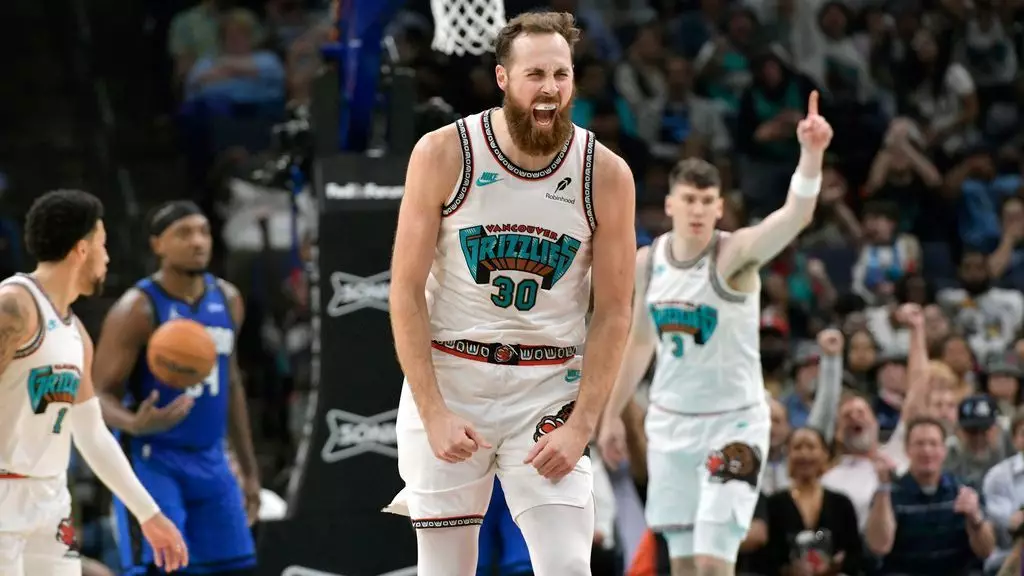The Memphis Grizzlies are quietly orchestrating a significant transformation within their roster, signaling a renewed focus on defense and versatile frontcourt play. The trade of center Jay Huff to the Indiana Pacers for a second-round pick and a pick swap exemplifies this strategic recalibration. Huff, a promising stretch-5 with a knack for three-point shooting and rim protection, demonstrated flashes of brilliance in Memphis’ system. His ability to stretch defenses and provide shot-blocking—a rare combination among tall players—secured his first standard NBA contract after four years in the league. Despite limited playing time, Huff’s efficiency from beyond the arc and his defensive metrics suggest he can be a valuable asset for Indiana.
Meanwhile, the acquisition of Jock Landale further emphasizes Memphis’s intent to bolster their frontcourt depth. Landale’s proficiency with on-ball screens and improved shooting percentages last season align with the team’s evolving, more perimeter-oriented style under coach Tuomas Iisalo. The potential of Landale to replace or supplement heavily-used players like Zach Edey, currently sidelined due to ankle surgery, could be pivotal for Memphis’s upcoming season. The team’s approach points toward a more dynamic, athletic, and defense-conscious system—a shift from the more traditional, post-heavy tactics of previous seasons.
Indiana’s Strategic Rebuild and Huff’s Role in It
The Indiana Pacers are taking a different but equally calculated approach. By trading a seasoned center like Myles Turner to Milwaukee in free agency, they signal their willingness to embrace a new identity that emphasizes versatility and shooting. Huff’s skill set, which closely mirrors Turner’s ability to stretch the floor while protecting the rim, makes him a compelling piece of Indiana’s revamped frontcourt. His shooting efficiency, notably among the top 7-footers in the league for three-point attempts, positions him as a modern big man—one who can threaten defenses from deep and switch onto smaller players without a significant drop in effectiveness.
The real opportunity for Huff resides in Indiana’s broader team-building philosophy. With the team aiming to maximize spacing and defensive versatility, Huff’s development could be critical in the Pacers’ quest for a playoff run. Yet, it’s worth questioning whether Huff, who has yet to fully command a consistent role in the NBA, can elevate his game to meet this challenge. His current contract through 2027-28 suggests the franchise’s investment in his growth, but the pressure remains to produce more consistent contributions on both ends of the floor.
The Broader NBA Context: Defensive Efficiency and Skill Development
These roster moves illustrate a broader shift in the NBA towards value-based, skill-oriented big men. Huff’s recognition as one of the small group of tall players with high three-point accuracy and defensive prowess underscores how the league’s evolution favors adaptable big men more than traditional paint-bound centers. His statistical rankings, especially in contested layups and dunks, highlight a player with emerging defensive potential—an asset that teams are increasingly prioritizing in a league that values spacing and switchability.
Furthermore, Memphis’s signing of Landale underscores a strategic emphasis on screen-setting ability and shooting—skills that align with the modern game’s demands. Landale’s experience and efficiency are assets, especially with key players like Jackson Jr. and Edey facing health setbacks. These moves demonstrate teams’ keen awareness that the future belongs to multi-skilled, versatile big men capable of both defending on multiple fronts and contributing offensively from the perimeter.
In essence, Memphis and Indiana are banking on the evolution of the big man, betting that skillful, mobile, and shooting-capable centers will be the linchpins of successful, modern basketball teams. These decisions reflect a deeper understanding of how the game’s priorities have shifted and position both franchises to adapt in an increasingly competitive landscape.

